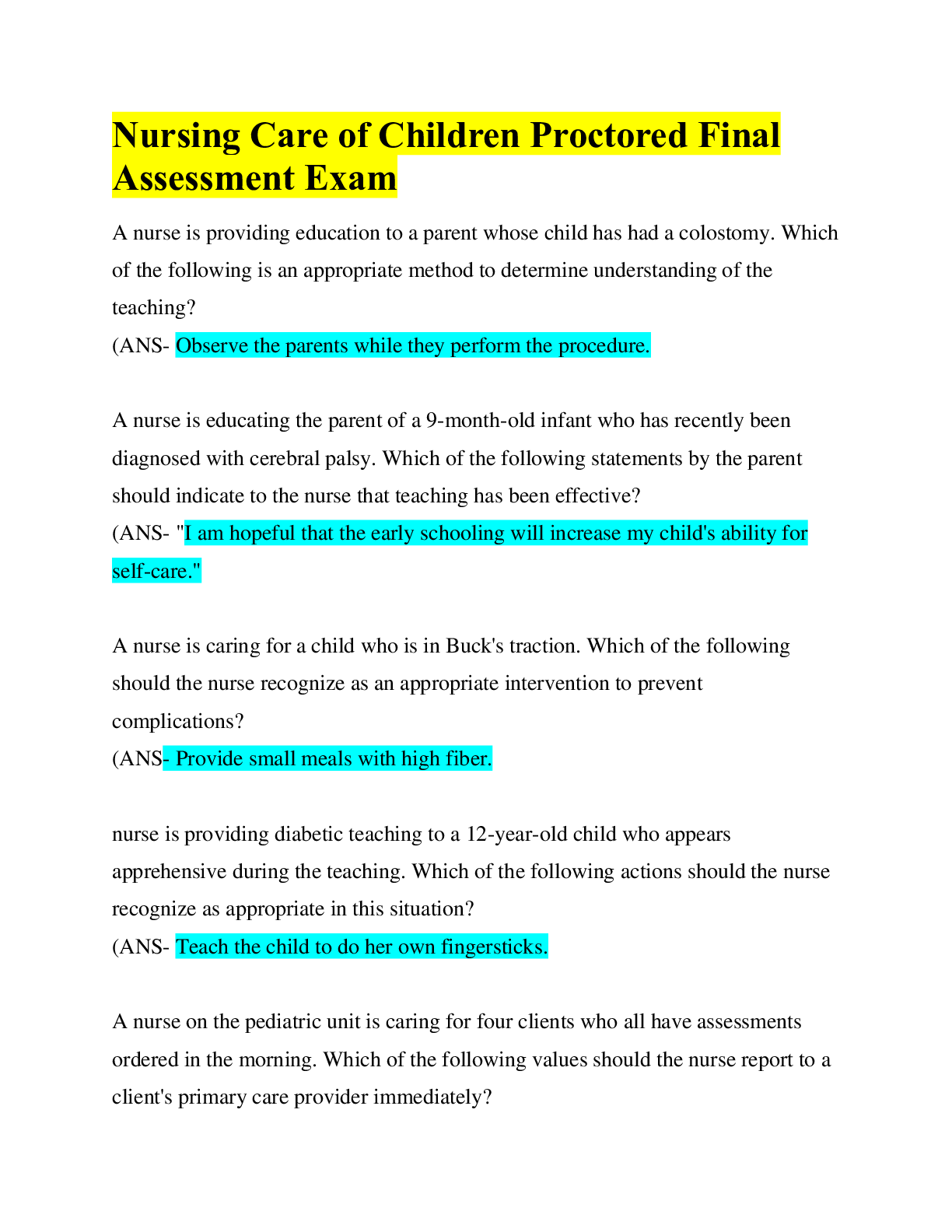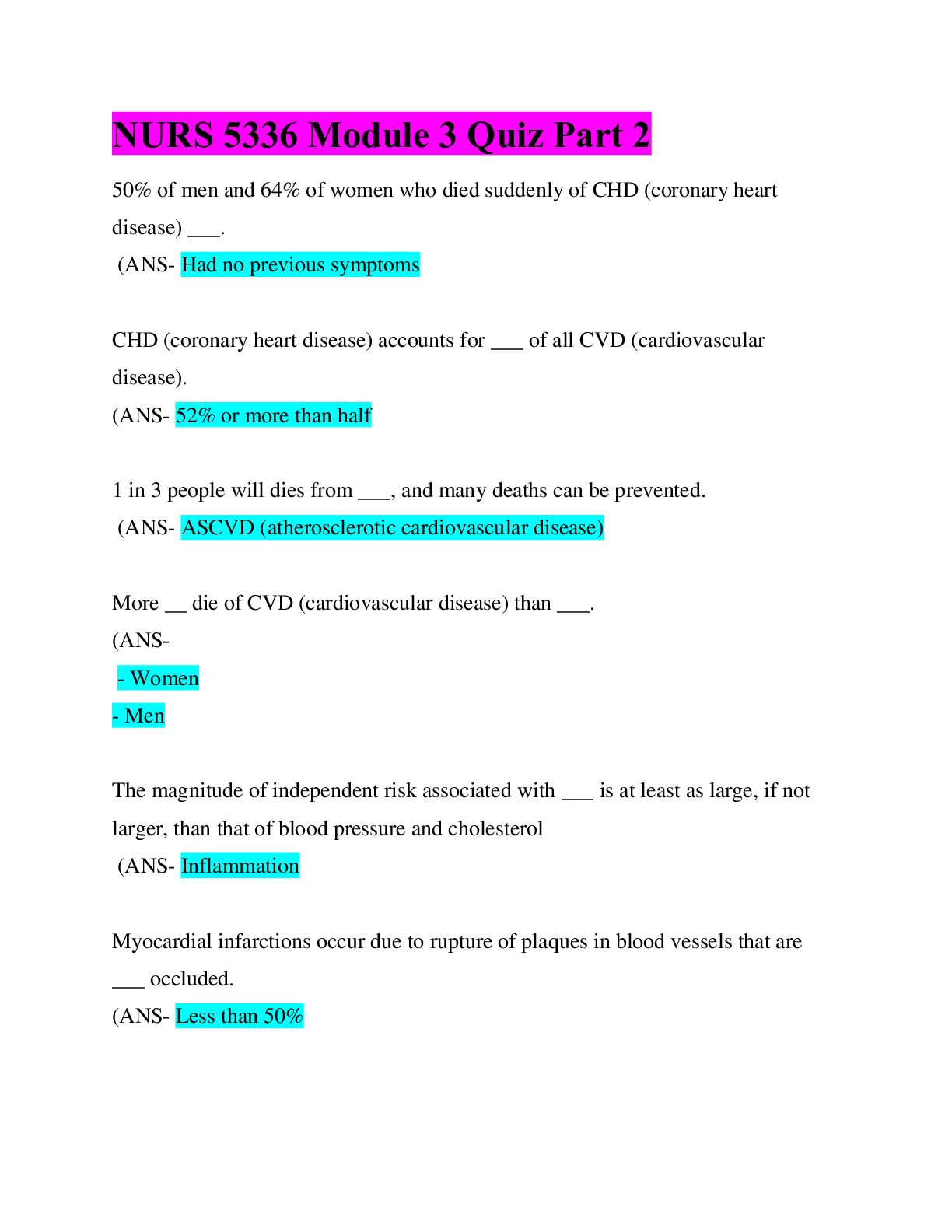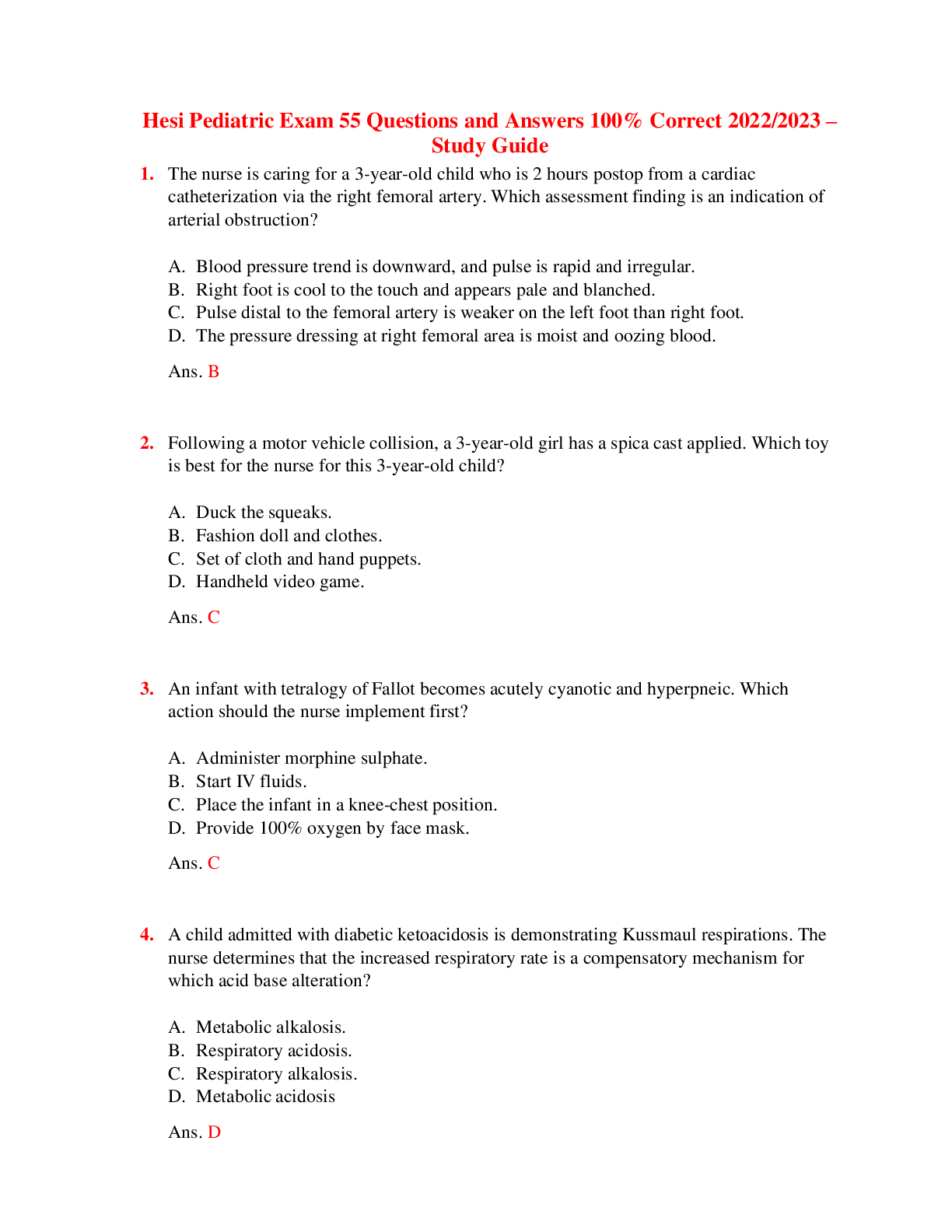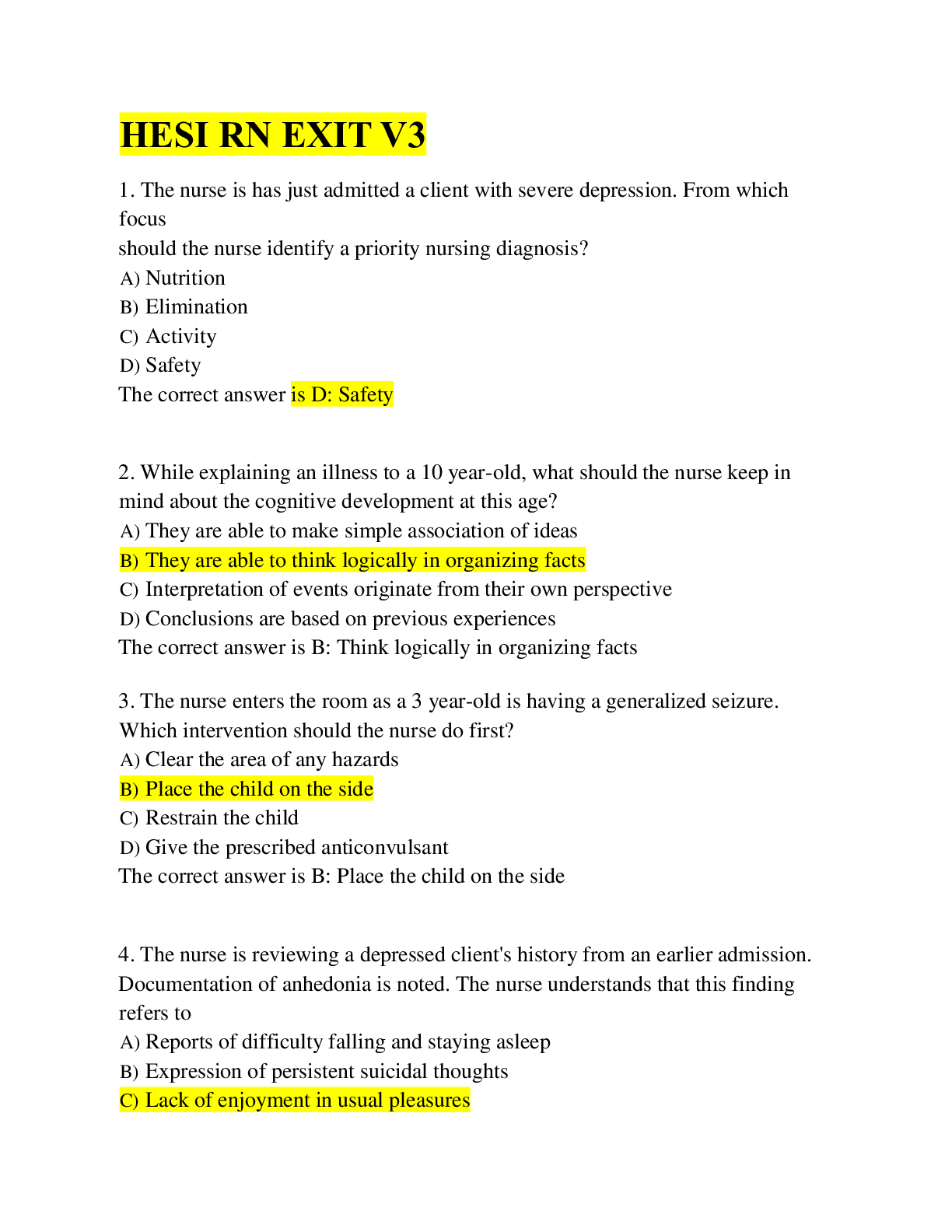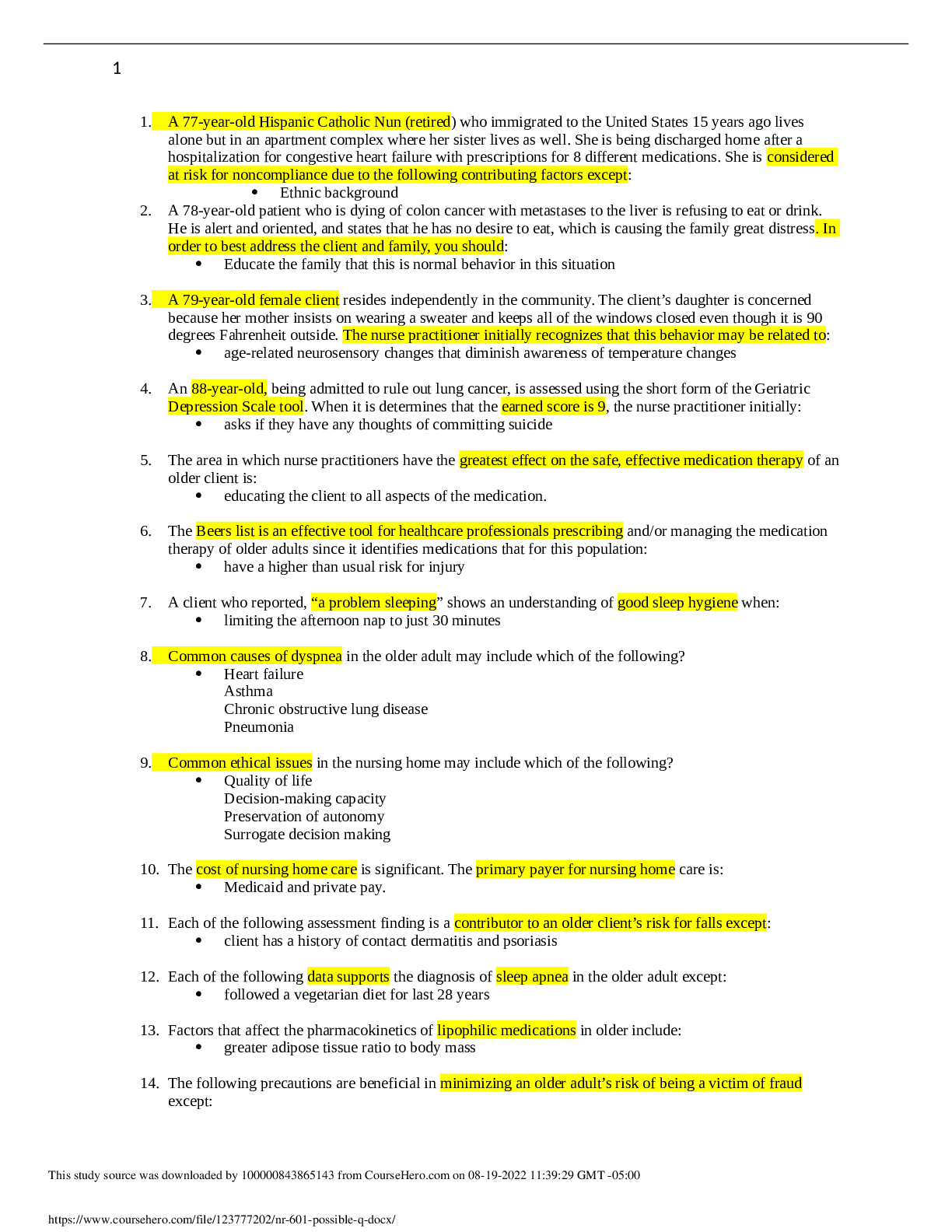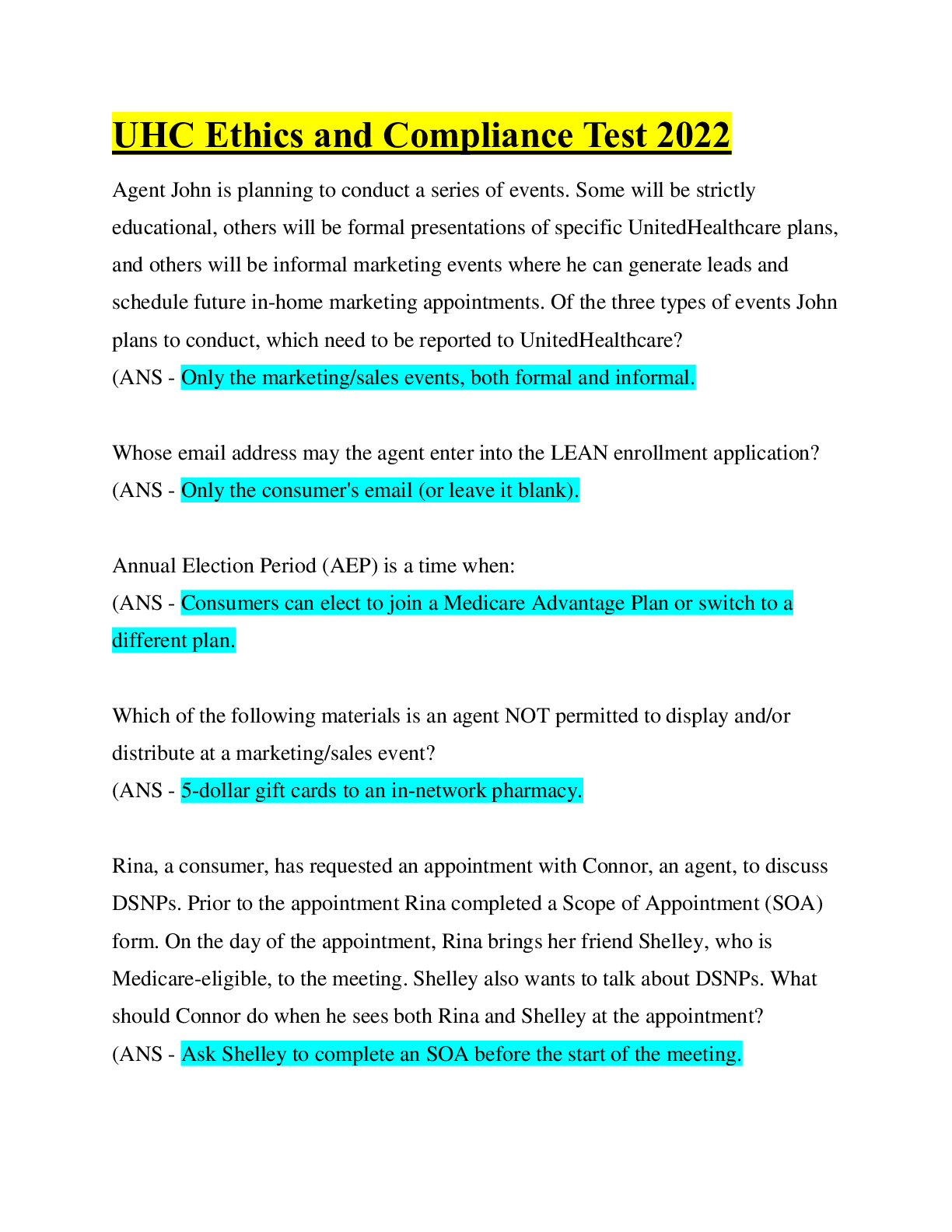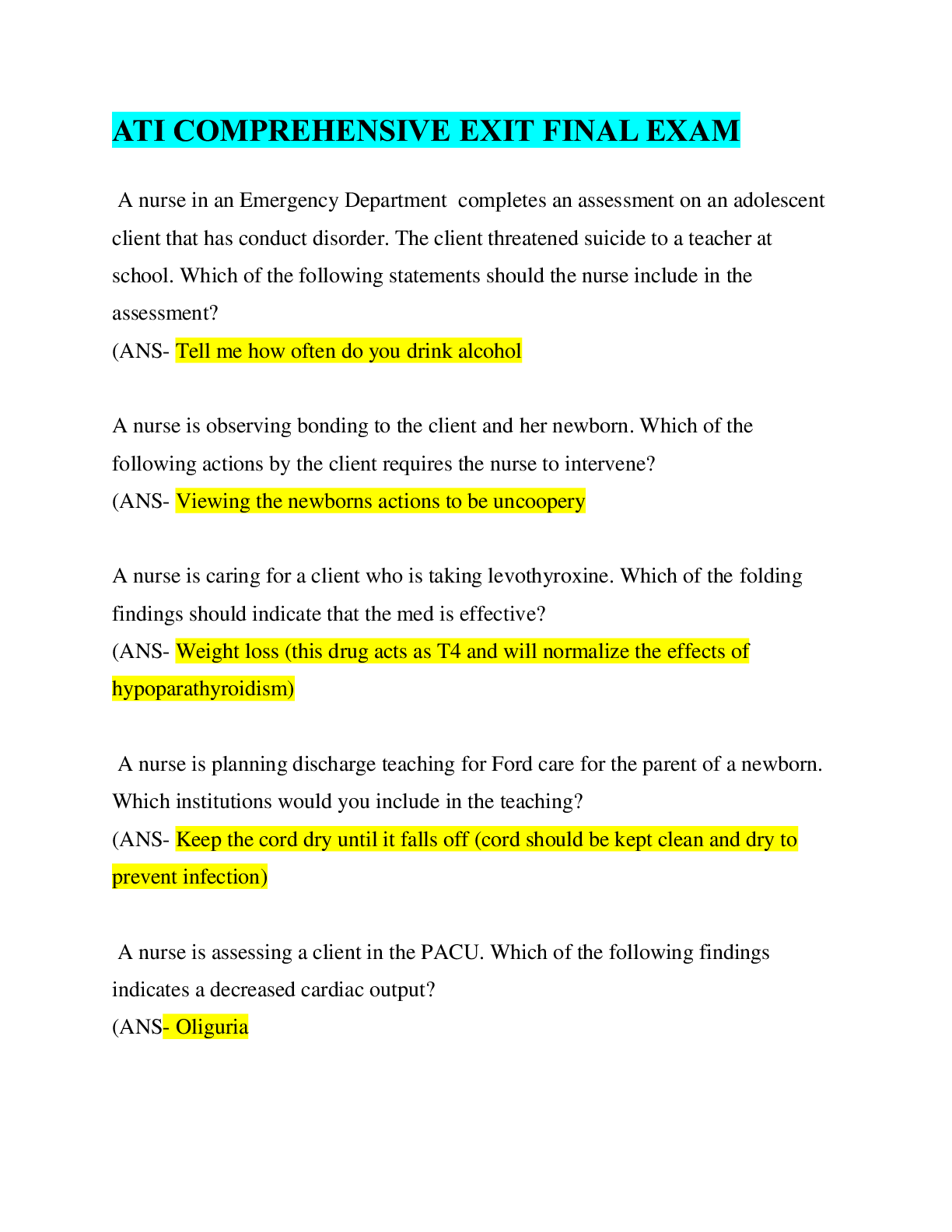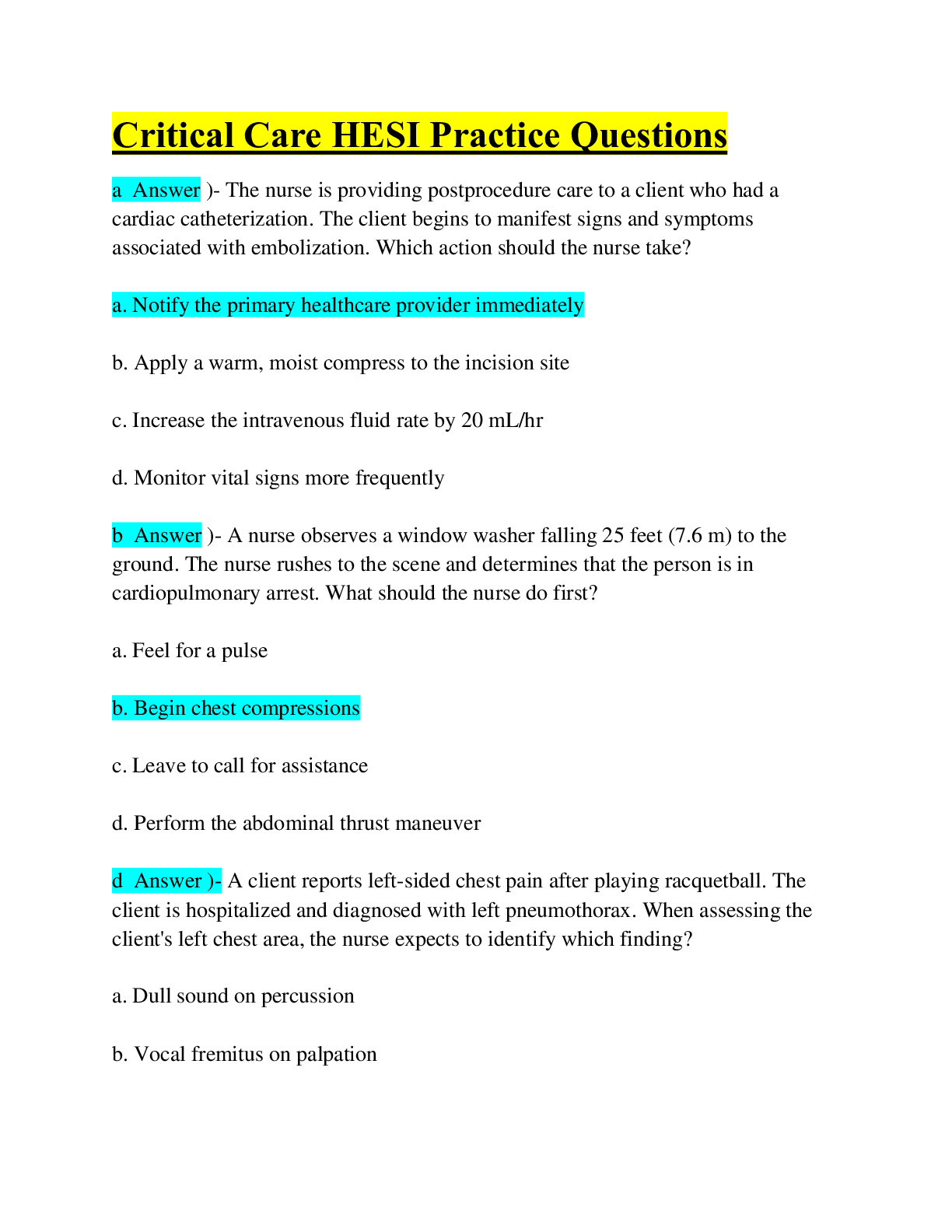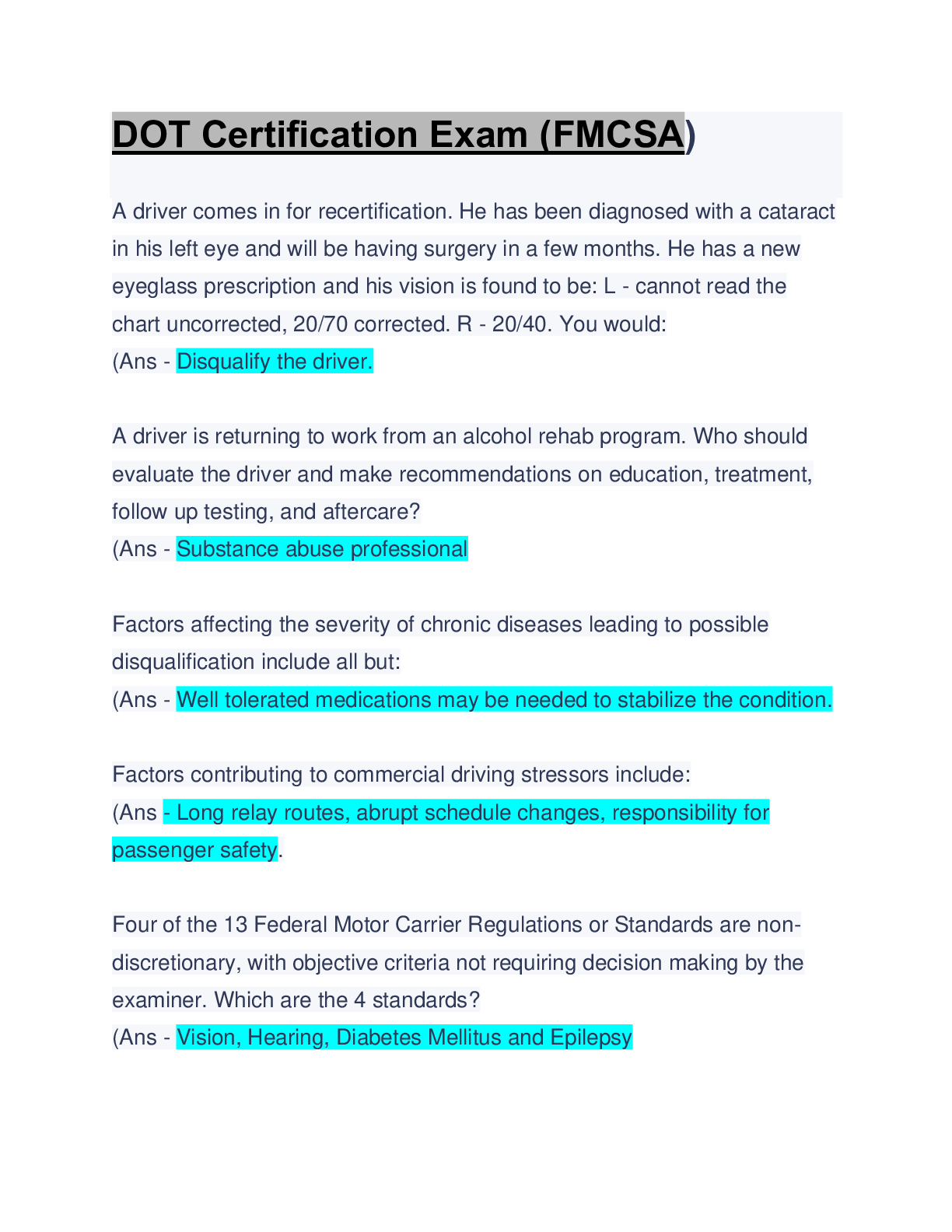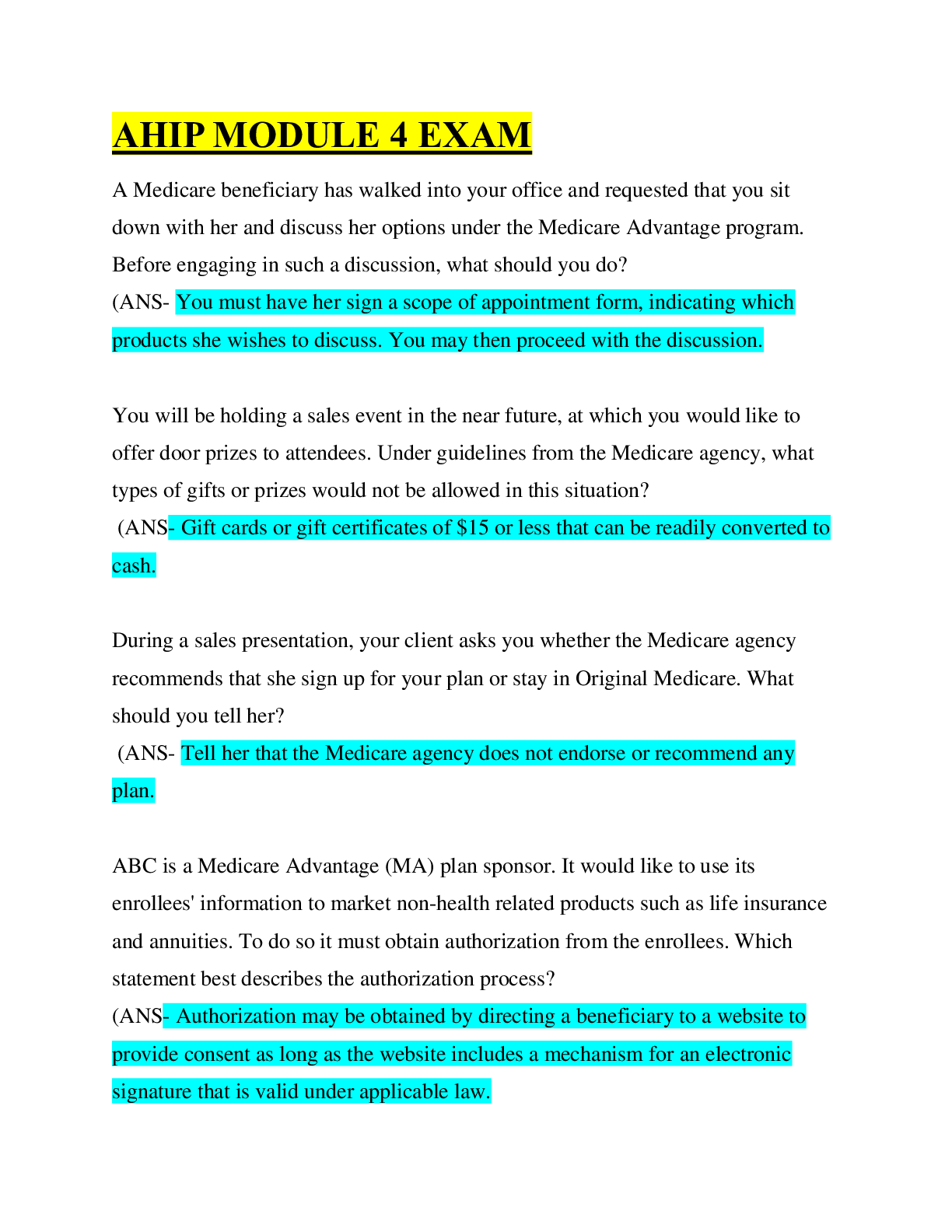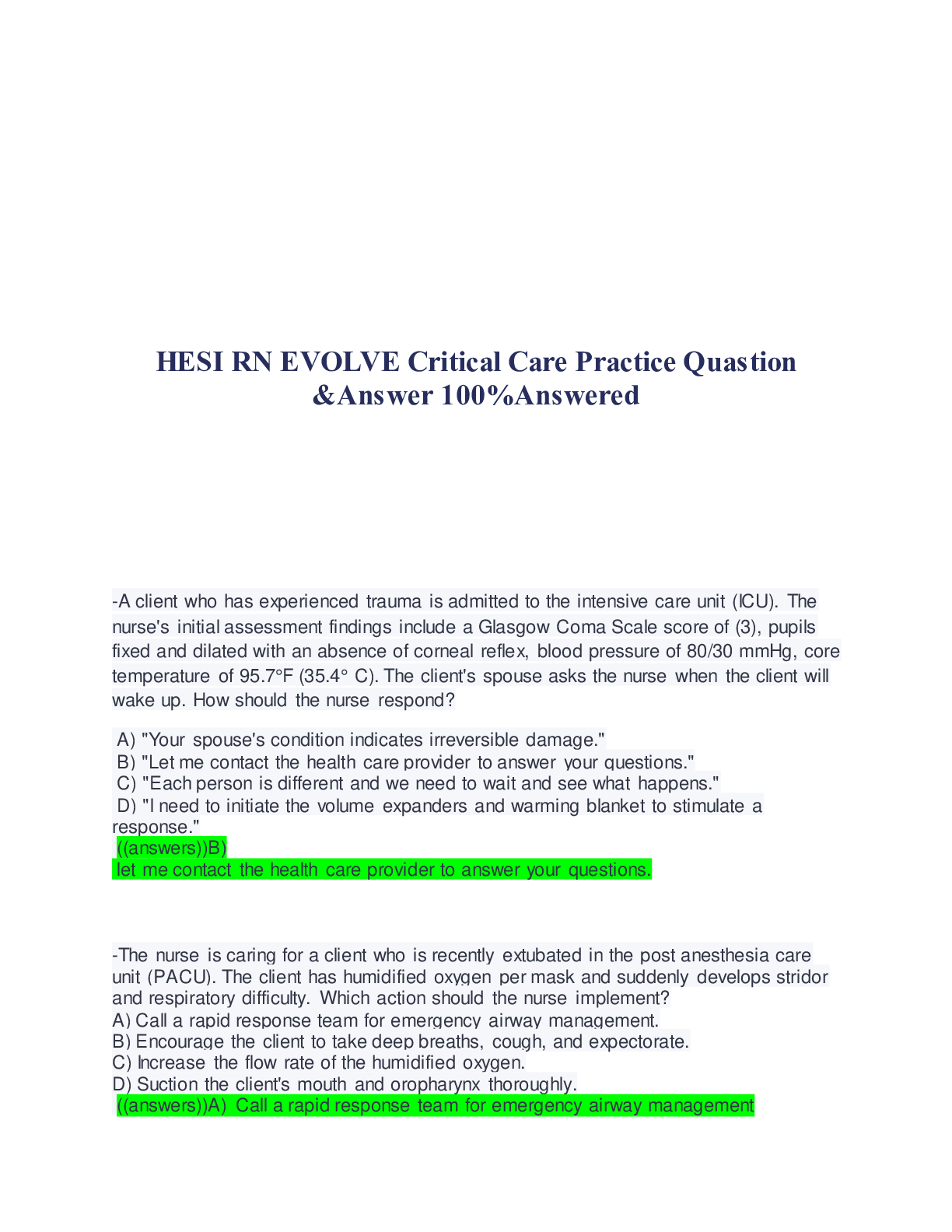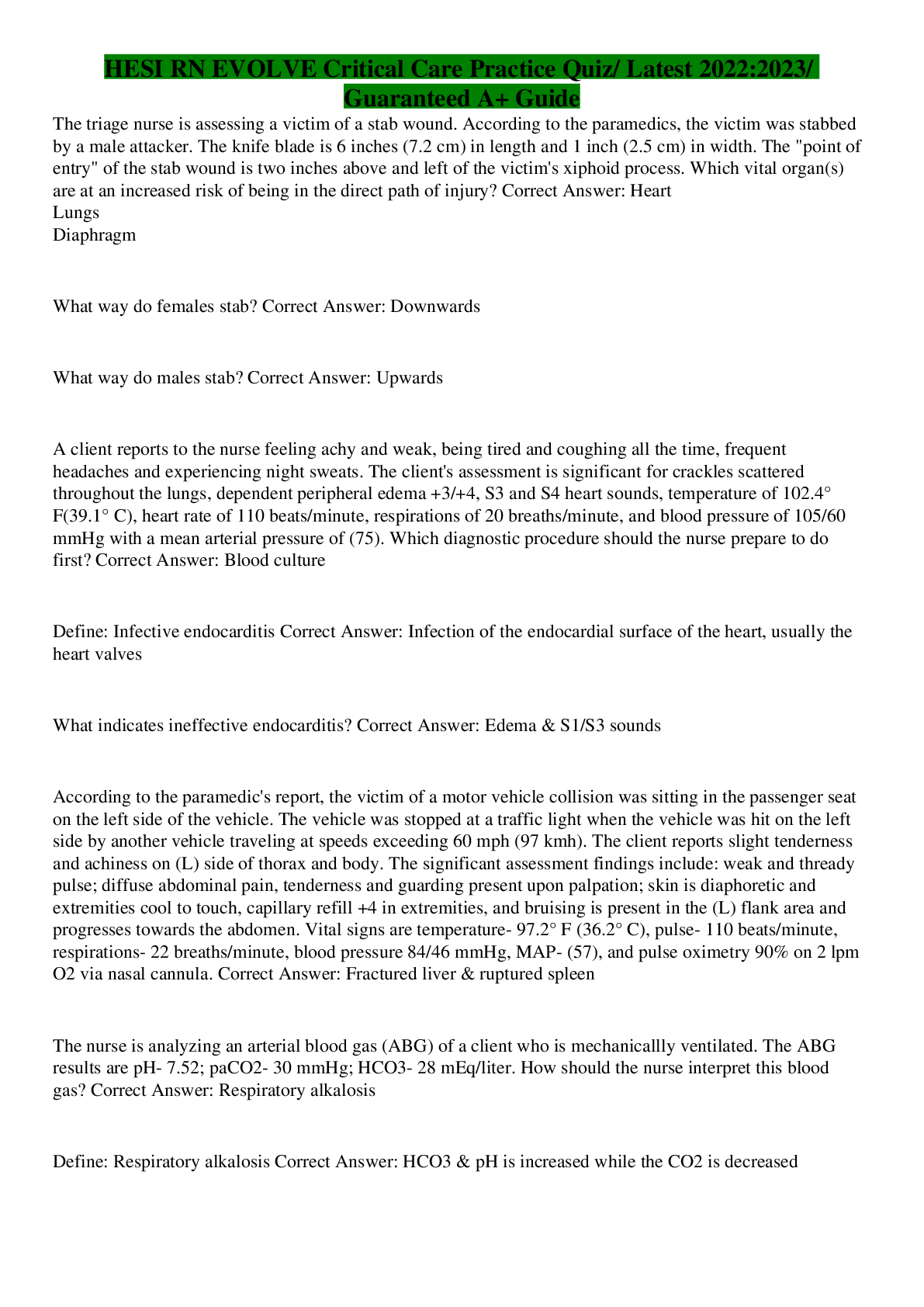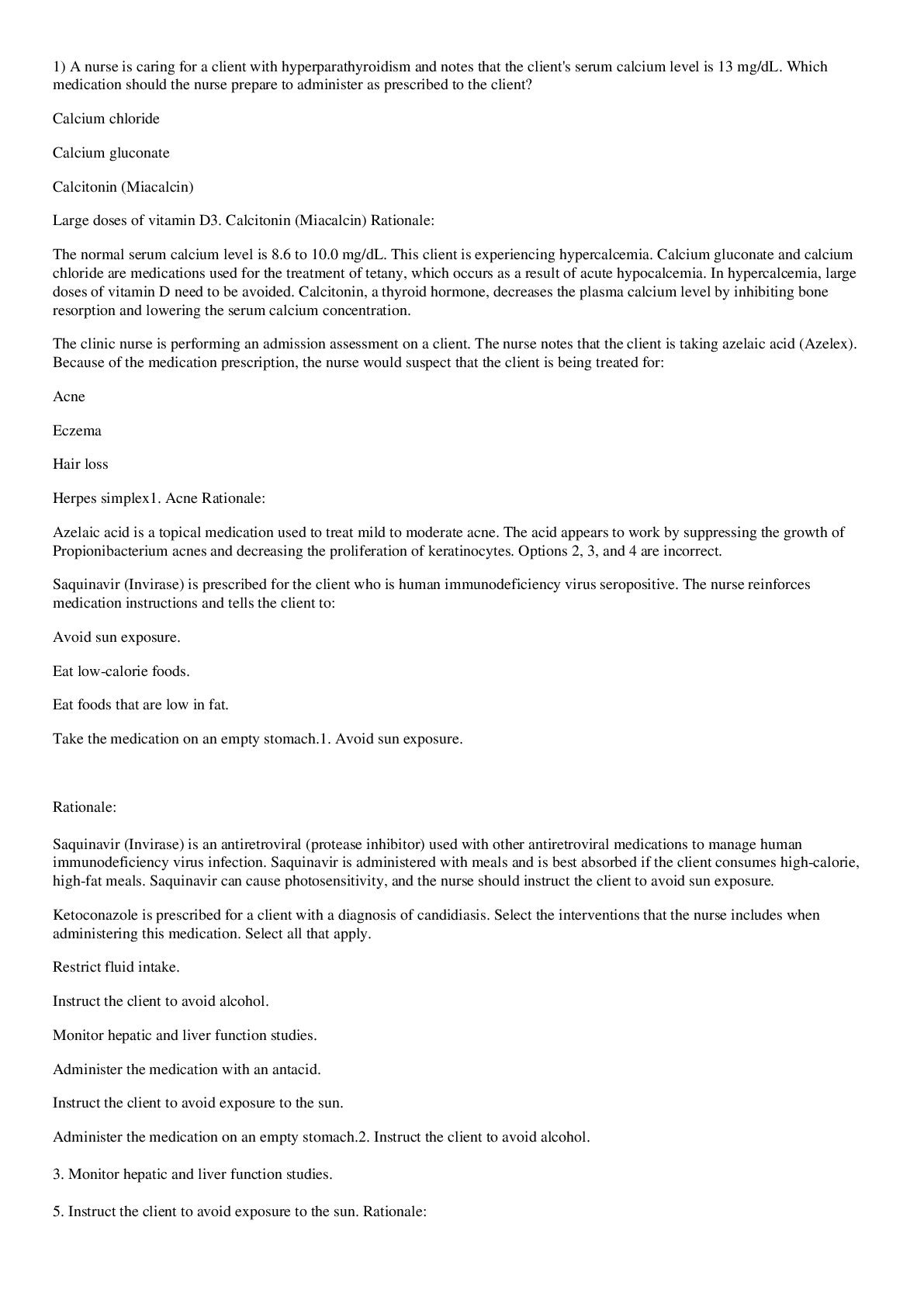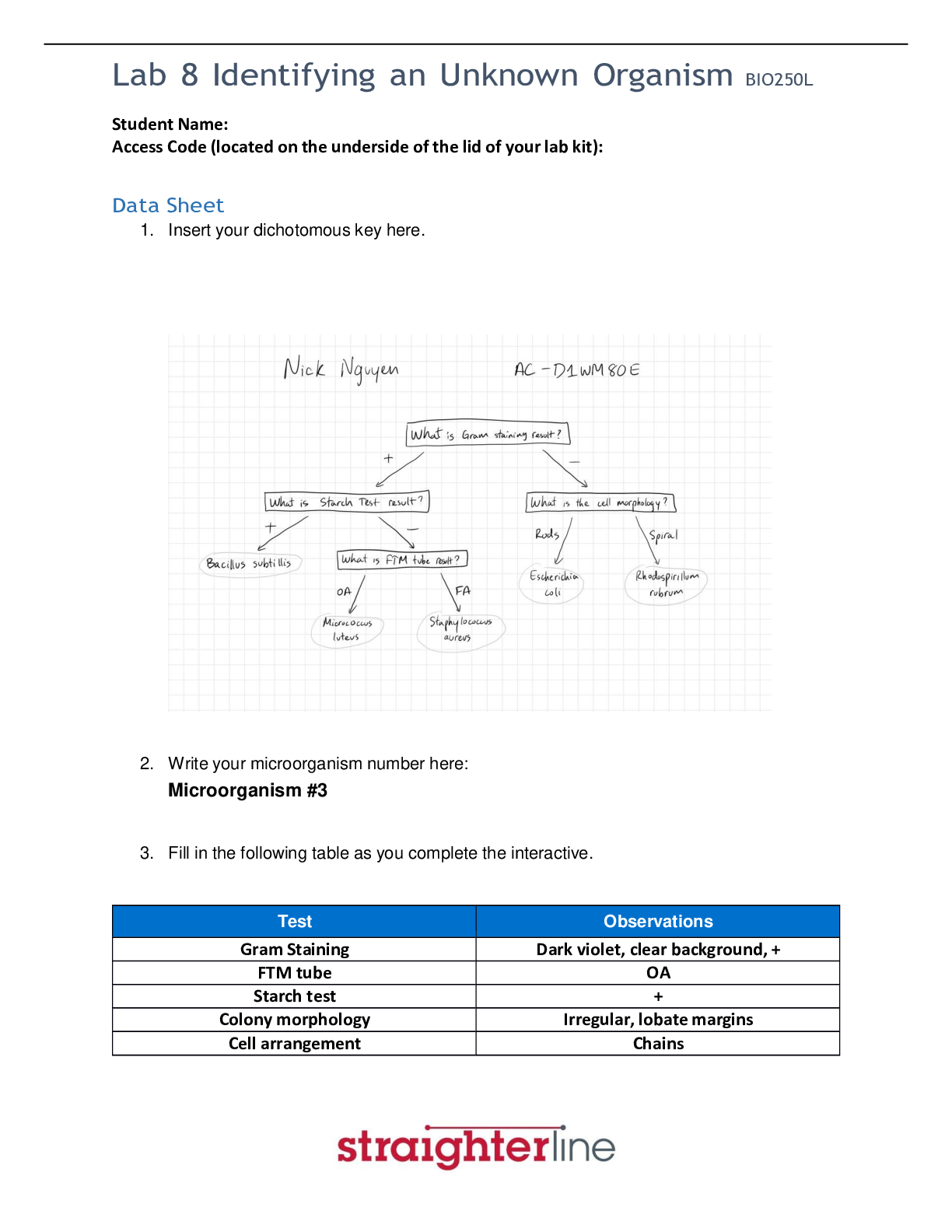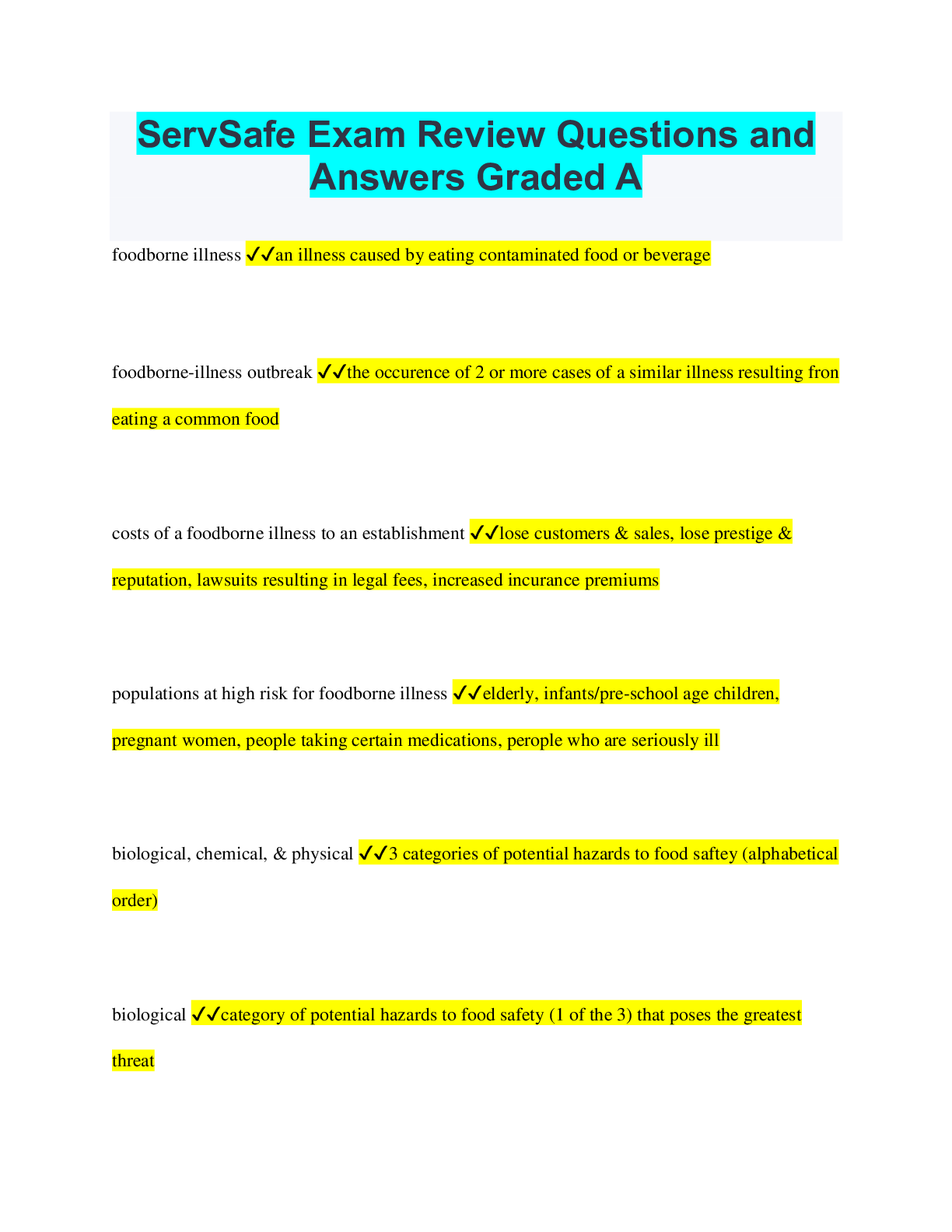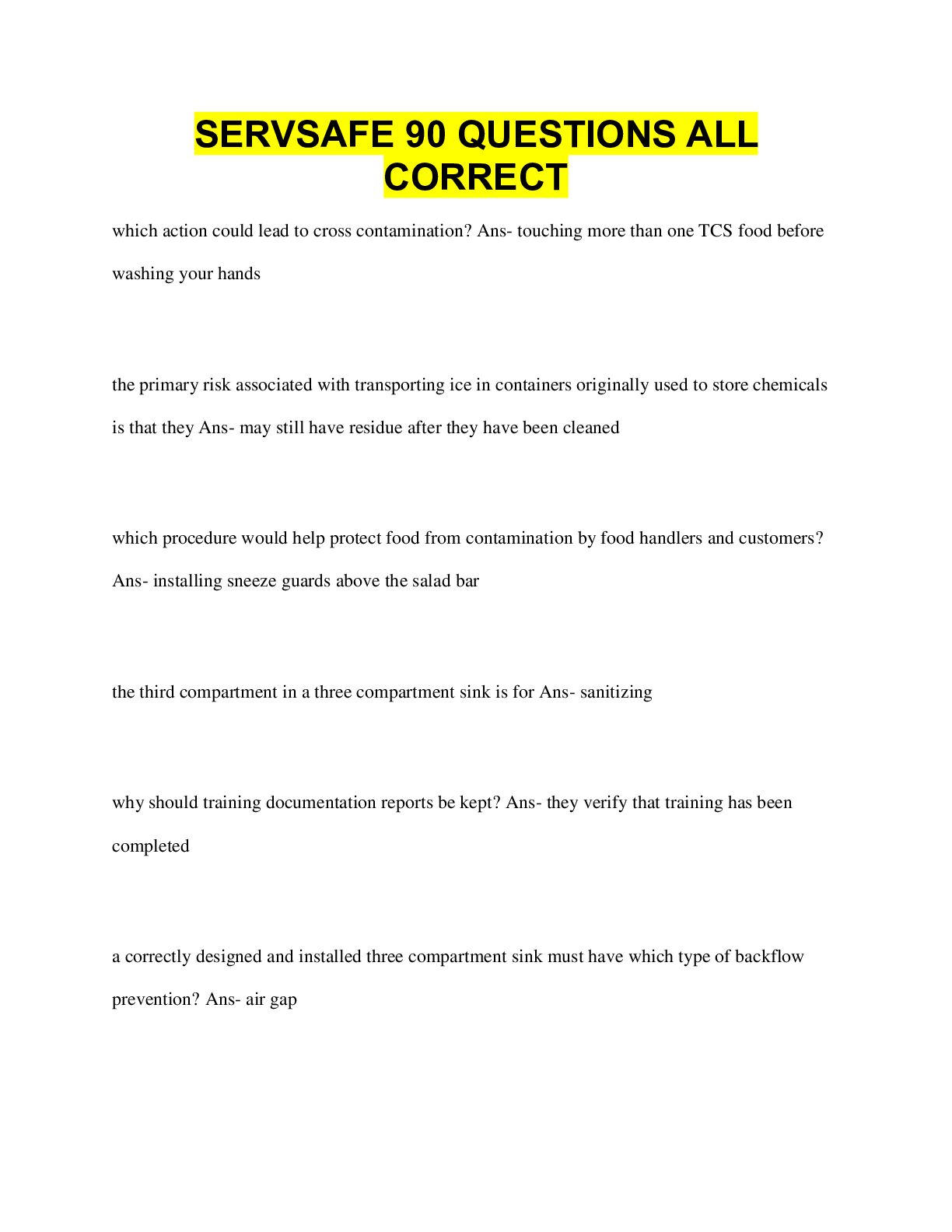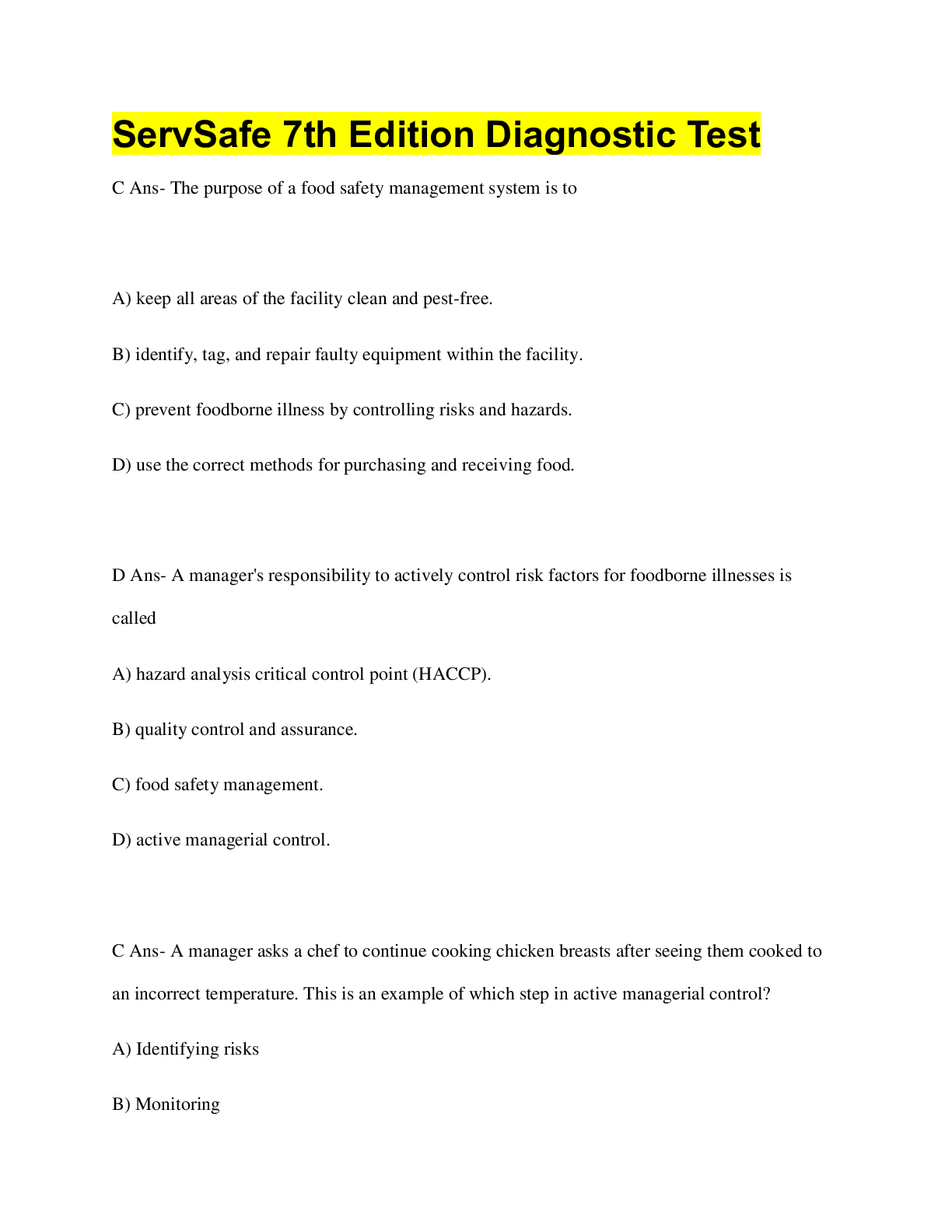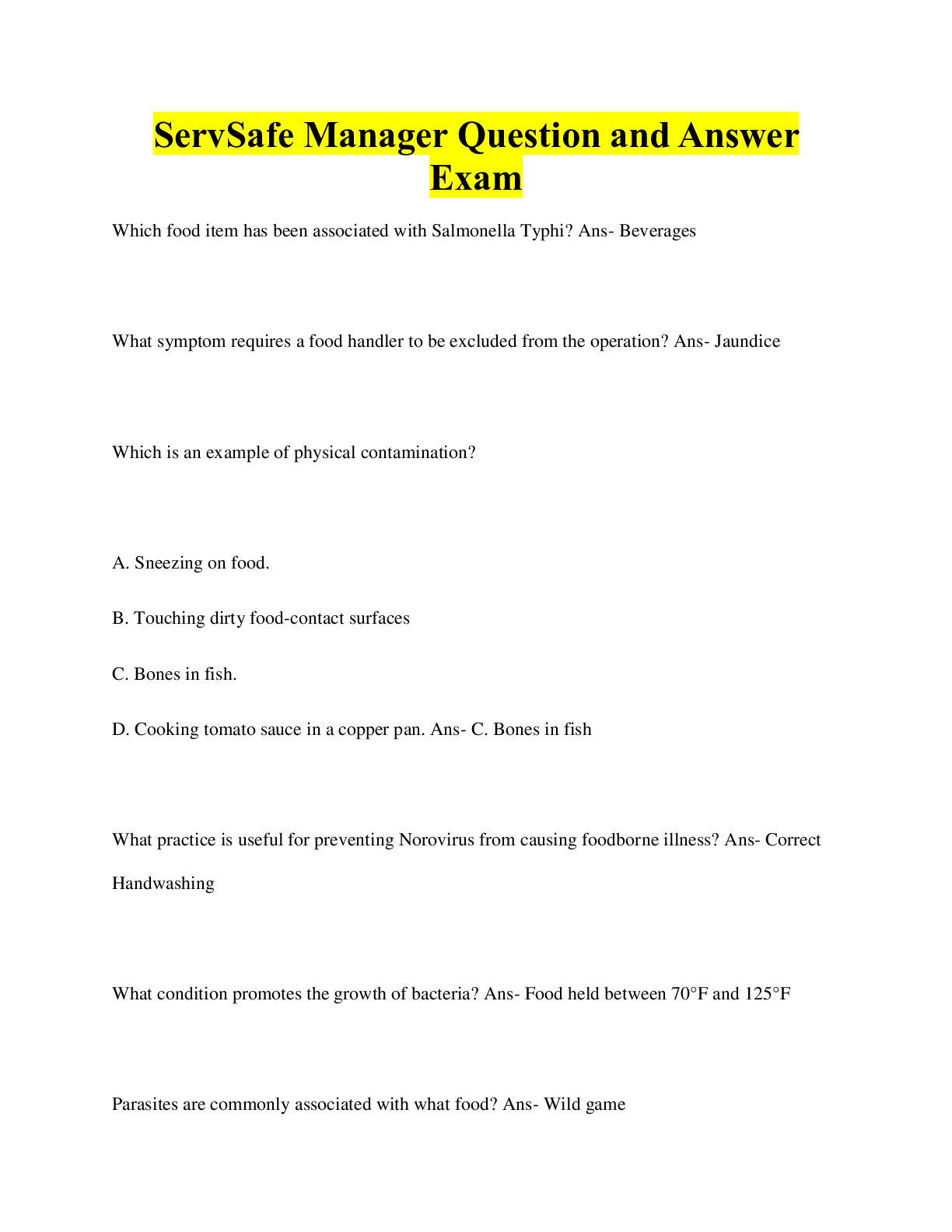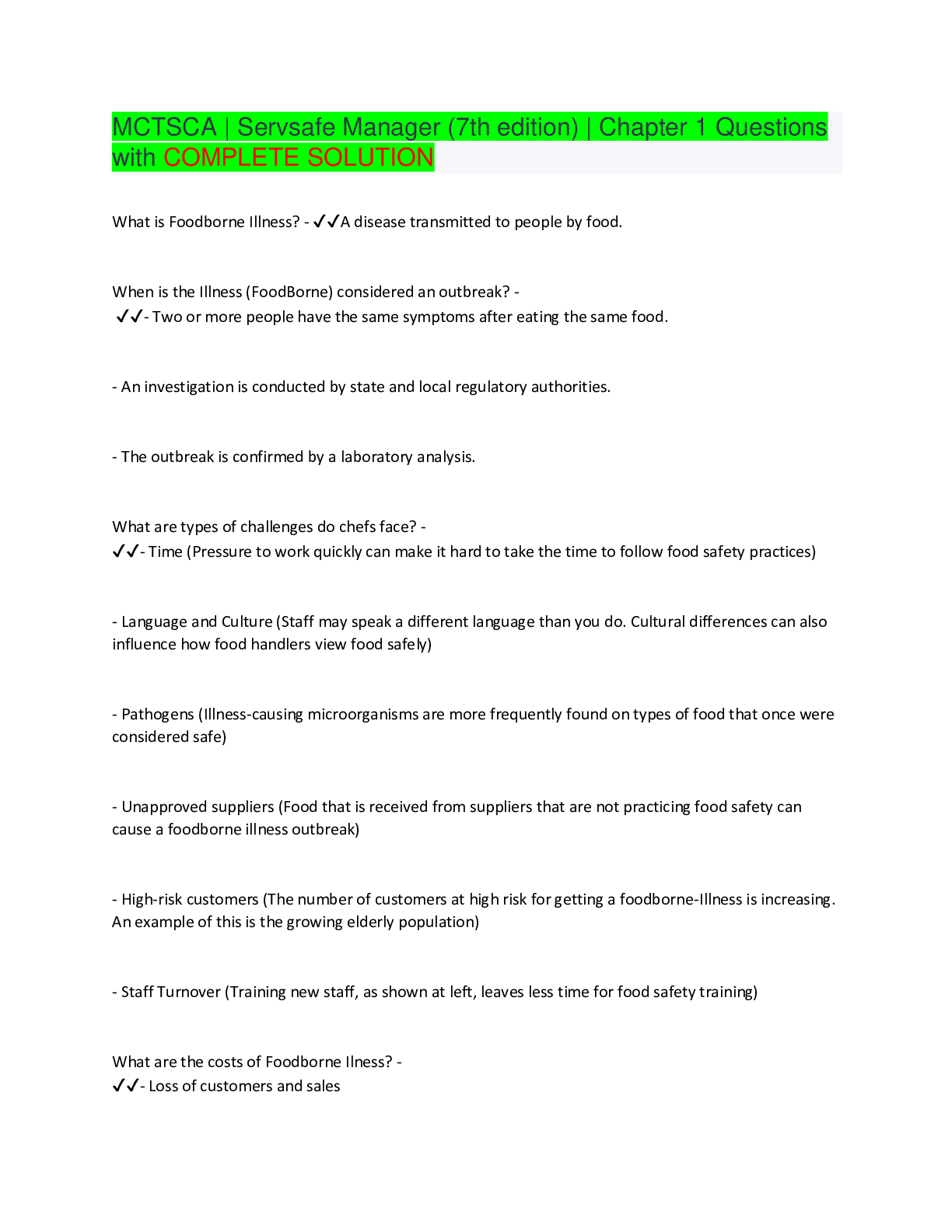Health Care > EXAM > HESI RN EVOLVE Critical Care Practice Quiz/ Latest Updated/ Guaranteed A+ Guide (All)
HESI RN EVOLVE Critical Care Practice Quiz/ Latest Updated/ Guaranteed A+ Guide
Document Content and Description Below
HESI RN EVOLVE Critical Care Practice Quiz A client who has experienced trauma is admitted to the intensive care unit (ICU). The nurse's initial assessment findings include a Glasgow Coma Scale score... of (3), pupils fixed and dilated with an absence of corneal reflex, blood pressure of 80/30 mmHg, core temperature of 95.7°F (35.4° C). The client's spouse asks the nurse when the client will wake up. How should the nurse respond? A) "Your spouse's condition indicates irreversible damage." B) "Let me contact the health care provider to answer your questions." C) "Each person is different and we need to wait and see what happens." D) "I need to initiate the volume expanders and warming blanket to stimulate a response." (ANS- B) let me contact the health care provider to answer your questions. The nurse is caring for a client who is recently extubated in the post anesthesia care unit (PACU). The client has humidified oxygen per mask and suddenly develops stridor and respiratory difficulty. Which action should the nurse implement? A) Call a rapid response team for emergency airway management. B) Encourage the client to take deep breaths, cough, and expectorate. C) Increase the flow rate of the humidified oxygen. D) Suction the client's mouth and oropharynx thoroughly. (ANS- A) Call a rapid response team for emergency airway management An older client is admitted to the intensive care unit after a small bowel resection. The postoperative prescriptions include a patient-controlled analgesia (PCA) device with morphine titrated per protocol. Which information should the nurse provide the client about the use of the PCA? A) Push button when pain is first experienced instead of waiting until pain is unbearable. B) Family members or visitors can press the button when the client grimaces in pain. C) Press the button every 15 minutes even when pain is not present. D) Delay pressing the button until the pain level is 8 on a scale of 1 to 10. (ANS- A) Push button when pain is first experienced instead of waiting until pain is unbareable The nurse is analyzing an arterial blood gas (ABG) of a client who is mechanically ventilated. The ABG results are pH- 7.52; paCO2- 30 mmHg; HCO3- 28 mEq/liter. How should the nurse interpret this blood gas? A) Respiratory acidosis. B) Respiratory alkalosis. C) Metabolic acidosis. D) Metabolic alkalosis. (ANS- B) Respiratory alkalosis According to the paramedic's report, the victim of a motor vehicle collision was sitting in the passenger seat on the left side of the vehicle. The vehicle was stopped at a traffic light when the vehicle was hit on the left side by another vehicle traveling at speeds exceeding 60 mph (97 kmh). The client reports slight tenderness and achiness on (L) side of thorax and body. The significant assessment findings include: weak and thready pulse; diffuse abdominal pain, tenderness and guarding present upon palpation; skin is diaphoretic and extremities cool to touch, capillary refill +4 in extremities, and bruising is present in the (L) flank area and progresses towards the abdomen. Vital signs are temperature- 97.2° F (36.2° C), pulse- 110 beats/minute, respirations- 22 breaths/minute, blood pressure 84/46 mmHg, MAP- (57), and pulse oximetry 90% on 2 lpm O2 via nasal cannula.Which potential injuries should the triage nurse assess? (Select all that apply.) A) Flailed ribs. B) Fractured liver. C) Ruptured spleen. D) Cardiac tamponade. E) Tension pneumothorax (ANS- B) Fractured liver C) Ruptured spleen A client reports to the nurse feeling achy and weak, being tired and coughing all the time, frequent headaches and experiencing night sweats. The client's assessment is significant for crackles scattered throughout the lungs, dependent peripheral edema +3/+4, S3 and S4 heart sounds, temperature of 102.4° F(39.1° C), heart rate of 110 beats/minute, respirations of 20 breaths/minute, and blood pressure of 105/60 mmHg with a mean arterial pressure of (75). Which diagnostic procedure should the nurse prepare to do first? A) Metabolic panel with electrolytes. B) Complete blood count. C) Liver function test. D) Blood culture. (ANS- D) Blood culture [Show More]
Last updated: 2 months ago
Preview 1 out of 19 pages

Reviews( 2 )

by Christiw80 · 2 years ago
Thanks for the awesome review. All the best in your studies. by Joy100. 2 years ago

by Joy100 · 2 years ago
Document information
Connected school, study & course
About the document
Uploaded On
Apr 06, 2022
Number of pages
19
Written in
Additional information
This document has been written for:
Uploaded
Apr 06, 2022
Downloads
1
Views
119


